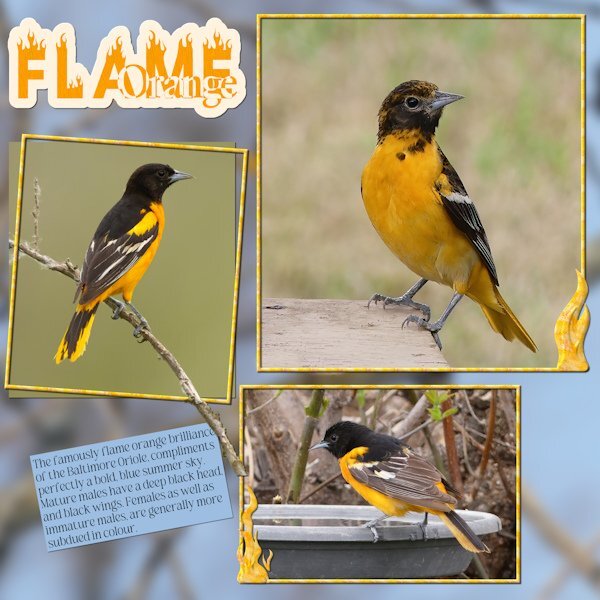
Sue Thomas
Members-
Posts
2,652 -
Joined
-
Last visited
-
Days Won
80
Content Type
Profiles
Gallery
Forums
Everything posted by Sue Thomas
-
A delightful page. The plight of the hedgehog hangs in the balance. I would say road kill is the number one cause, then pesticides. At home there are now tunnels under roads for the hedgehogs to get from one side to the other in safety. I haven't seen one for several years. I have photos of my children when they were young feeding hedgehogs. At the bottom of our drive we had a cattle grid. Hedgehogs used to fall into it. Quite often the kids would rescue one or two, on their home from school, from the cattle grid. Giving them a feed before letting them go out in the hedgerows.
-
Not really, as the majority of the song birds fly south. When it does go silent when they are here, it means that a predator is at large. The nights are always noisy, between the Great Horned Owls, coyotes howling, and foxes barking, they make their presence known. Their sounds travel well in the night air. Susan you are only an hour and half flight away from me. Or a 6hr drive. You and anyone else will be made most welcome at anytime.
-
As you go through Carole's tutorials, you'll find that she often changes settings within tools, to achieve the desired effect. Which is probably what has happened. In those cases, it is then a good idea to reset to default. Once you have learnt how to use those settings through here tutorials, they can they be adopted in other projects that you are working on, as you will have a much better understanding of how those tools work.
-
You have perfected the art of studio lighting, your shots and layout is ineffable!
-
Although the bright lights of the city skyline is a beautiful sight. It does hide the beauty of the sky. Unfortunately, noise and light pollution goes hand in hand with city living. Without any exaggeration, I listen in awe to the silence, especially on days when there isn't a breath of wind or a bird sing. Do you have any parks close by, which enables you to escape the city to get back to nature?
-
I'm going to suggest to you that once you have finished with the inner bevel, restore it to default, like you do for the brush variance palette. Certainly for now anyway, until you are more familiar with it. Try lowering the elevation to 30, which is the default setting. I see the angle is slightly off, unless that is what you want. Again, the default is 315.
-
I haven't got a clue what it is like to live in a city, or any built up area. All I know is that I couldn't live in any urban area. I regard myself as being very lucky, that I was born into farming, married a farmer, and finally ended up here on a prairie farm. Both my children were born into farming, and still live in rural areas. My granddaughters were born into farming too. It's a wonderful lifestyle. It doesn't suit everyone though, thankfully we are all different.
-
My sentiments too! The US government is already loosing it's political footing on the world stage, along with many other Western governments. (so called empires) When they fall, and they will fall, in time stability and peace will be regained.
-
In this challenge the word doesn't have to be related to the previous word.
-
It certainly is a sight to be hold and cherish. As the years have gone by fewer and fewer ranchers trail their cows out and then back home. They now get trucked. Horses are also being replaced by quads to gather and trail cows. The sky is equally as awesome, you have to experience it to really appreciate it. I spend a lot of time on my back, looking up, day and night. At home the Border Collie is the favoured dog for working, more specifically sheep. As the Border Collie will gather to fetch them to you, which they do instinctively. I used to train our borders for sheep dog trails. Only for local shows, not on a professional scale. We brought our Border Colie bitch out with us. The dog of choice out here for working cattle is the Australian Kelpie. They will trail cows, also they are more aggressive, which is what you need sometimes. Not around cows with their calves though, as you are asking for trouble in that scenario. As the cows will turn to defend their calves. In my opinion not a good combination.
-
Quite possibly. I can say in all honesty, that there aren't any comparisons what so ever between the UK and Canada, more specifically, the prairie provinces.
-
Follow the steps that Corrie and I have taken. Corrie is yet to create a page using the word PUMKIN. And post it in her original comment, by using the edit tab. I decided to take the word ORANGE, which was Corries word of choice. I have created a page containing the word Orange. Should you decide to take the word that I have submitted which is RIVER, you are committing yourself to creating a page with the word RIVER in the title. Also you have to think of another word to enable someone else to take on the challenge. It can any word what so ever.
-
I took the word ORANGE from Corrie. Here is my page. Using the word Orange in the title. I created a ghost text, turning it into a sort of sticker for the title. Added flames to 2 of the frames, extended the branch out and over the frame. Used a photo for the background, which consisted of branches and blue sky, blurred. As I mentioned blue skies in the text. Susan prompted me to mention our blue skies, that go on for ever. I believe I am correct in posting my page, in the original acceptance message of the word Orange. By selecting edit. Which is what I have done.
-
Even after all these year, the vastness still never ceases to overwhelm me. From someone who's homeland is small Island. You can put 3 UK's in Saskatchewan alone. A population of over 70 million. Saskatchewan has a population of just 1 million.
-
'I take it' and the next word is: RIVER
-
Thank you Julie. Not in my wildest dreams did I ever think of leaving my homeland, and the life I had. Although my heart is still in Wales, I have adapted well here. If it wasn't for the local ranches that introduced me to their way of life, which revolves around horses, and cattle. I wouldn't still be here. Within my first 6 months here, I had the pick of any horse that I had schooled. The rest is history. Here are 2 photos, which I took trailing cows home for the winter. There is always a lead cow, that has made the trip several time prior. They move well, especially when they are strung out, with the wind in the faces, to keep them cool. Making the riders job easy, just along for the ride. I rode to the top of a hill, to take the first shot, looking down on the cows, and the vast expanse of the landscape. Once they had a drink, I rode on in front to open the gate. (one of my all time favourite landscape shots) As seen through Meg's ears, and I added Nell. Extracted her head, overlay.
-
When we first moved here, word soon got around that I was a compitent horse woman. Although the disciplines I was used to was very different to western riding. Basic horsemanship is the same where ever you go. I was soon back in the saddle, trailing cows across the open prairies for local big ranches. Days at a time. Schooling and fetching on their young horses. Brandings. I've vaccinated, and ear tagged thousands of cows and calves. I do have reservations about branding though. Being a farmer's daughter, animal husbandry wasn't new to me. My girls and I still gather and trail cows out to their summer pastures, and fetch them home for the winter. The horses looked at the Buffalo but weren't put off by them.
-
The eyes can reveal so much. I can read horses through their eyes, and overall disposition. Which applies to most animals.
-
They are very fast, considering their huge body mass. Also, they don't tire when running vast distances, to overcome this they extend their tongues out, enabling a much greater lung capacity.
-
-
Over the years I have been fortunate enough to ride the Grasslands National Park, East block and the West block, which extends into the US. I've seen the Prairie Dogs, burrowing Owls, and of course the Native Bison, which are free to roam, without human intervention. Here is a shot I took back in 2016. The North American settlers, committed immoral atrocities of genocide on a mammoth scale of the Native Indians, and it's wildlife. This Bison is allowed to be free, and roam the vast grasslands, as Bison do instinctively migrate. They were introduced on 1999. Look closely at it's eye, it's free and wild. Now look at the next photo. Their eyes are dull, oppressed. I pass this large herd once a week, (raised for commercial use) to go shopping, they are confined, handled by humans, they graze on stubble, and hay.
-
There isn't a day that goes by, where we don't learn something new in the campus, myself included.
-
It was a pleasure to be able to suggest, what you had mistakenly done. The punch is also perfectly aligned, which makes a huge difference. We have all been there, done something we are not happy with, and can't work out why, even more so when the brain is tired, and in turn not functioning as it should.
-
Quite simply a superb no fuss layout. I love where you placed the sequin. The background colour highlights the colours in the photo perfectly. I feel quite honoured that you nicked my large corner punch idea, which adds a touch of class to the layout.
-
For those that would like a better view of the wasp, I have posted it on facebook. ( Macro photography).









-sharpen-Standard.jpg.09f893cb3a7d03cc84b8544fa9cfe826.jpg)
